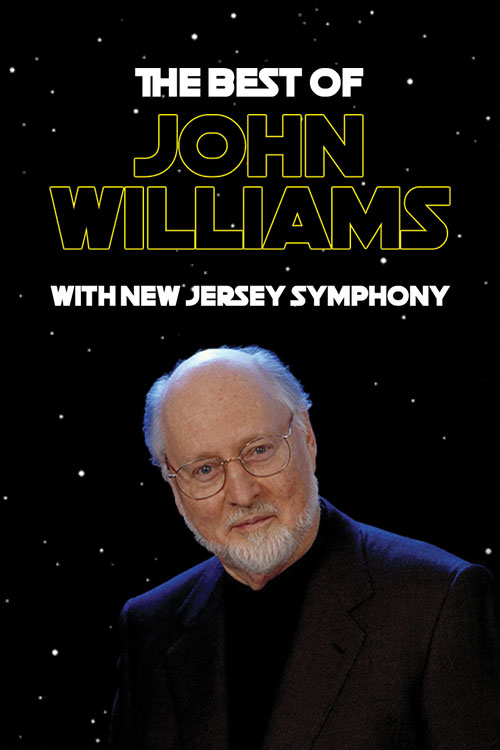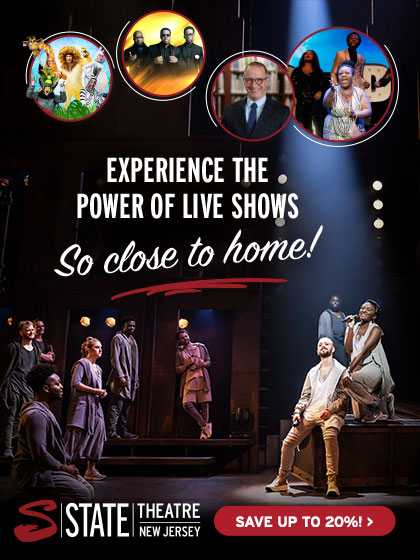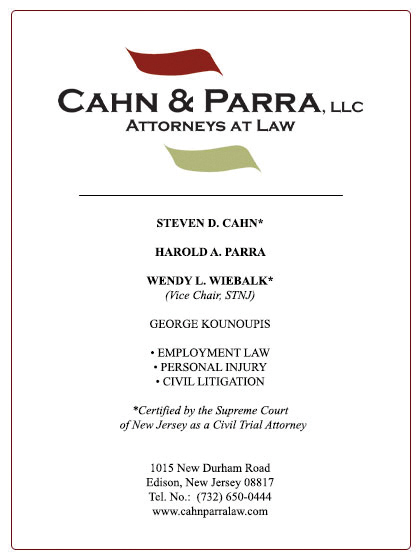

The Best of John Williams
NEW JERSEY SYMPHONY
JOHN WILLIAMS
Superman March
Shark Theme from Jaws
Theme from Jurassic Park
“Viktor’s Tale” from The Terminal
“Devil’s Dance” from The Witches of Eastwick
Excerpts from Close Encounters of the Third Kind
Cowboys Overture
—Intermission—
“Harry’s Wondrous World” from Harry Potter and the Sorcerer’s Stone
Selections from Star Wars
“Across the Stars” from Star Wars Episode II: Attack of the Clones
“Anakin’s Theme” from Star Wars Episode I: The Phantom Menace
“Imperial March” from Star Wars Episode V: The Empire Strikes Back
“March” from 1941
“With Malice Toward None” from Lincoln
“Adventures on Earth” from E.T.: The Extra Terrestrial
Please note: John Williams will not be in attendance for these performances. This concert features selections from Williams’ scores; there is no film projection.
Program Update: Guest conductor Damon Gupton is unable to appear on the program due to illness. Constantine Kitsopoulos will conduct the concerts this weekend.
From a galaxy far far away, to the magical world of Harry Potter, to the jungles of Jurassic Park, the sound of American cinema is inextricably linked to the music of John Williams. John Williams’ career as a film composer has spanned seven decades, over the course of a remarkable period of change and growth in Hollywood. Starting with the B-movie Daddy-O in 1958 and stretching well into the 21st century (up until recently, the composer had insisted the upcoming 2023 release Indiana Jones and Dial of Destiny will be his last film score), 91-year-old Williams has scored some of the most popular and beloved films of our time. His credits include the entire Star Wars Skywalker Saga, the first three Harry Potter films, the entire Indiana Jones franchise, several Jurassic Park films, the Home Alone movies, and so many more. His work has also been intertwined with the great director Steven Spielberg—the pair first collaborated on The Sugarland Express in 1974, and have gone on to work on more than 20 films together, including Jaws, Schindler’s List, Saving Private Ryan, Close Encounters of the Third Kind, and others.
Williams’ music is easy to spot in the theater by its shimmering string writing, lightning-fast passages in the woodwinds, and melodic brilliance in the brass. But what makes his music particularly special is its heavy reliance on the musical technique of the “leitmotif,” or a recurring theme that is linked to a particular character, location, or idea. In the classical canon, Richard Wagner was best known for his use of this technique in his operas, but John Williams takes it to the next level. A catalogue detailing every leitmotif and musical theme in the Star Wars franchise developed by Dr. Frank Lehman, film musicologist at Tufts University, shows there are an astonishing 24 distinct leitmotifs in the original trilogy, and 64 total in the entire Skywalker Saga.
In this program, artfully assembled by guest conductor Damon Gupton, Williams’ mastery of character development through music is on full display, showing us his creative range in depicting all kinds of characters, from fictional traveler Viktor Navorski in The Terminal to Abraham Lincoln to E.T., the extra-terrestrial. For an even more impressive example, take the selected themes from Star Wars in the second half. You’ll want to listen closely to “Anakin’s Theme” from Episode I: The Phantom Menace—there’s a hint at the end of Anakin’s leitmotif that echoes Vader’s famous theme, “The Imperial March,” foreshadowing the villain Anakin will become. Williams also has an uncanny ability to craft entire sound worlds that feel intrinsic to the places they represent. It’s hard to imagine the Harry Potter films without Williams’ sparkling and mysterious music, as you’ll hear in “Harry’s Wondrous World.” Today’s concert will take you on a magical journey through your favorite fictional worlds alongside your favorite characters, and we’re sure you’ll leave the concert hall singing one of John Williams’ unforgettable tunes. We hope you enjoy this celebration of his music and his legacy!
Notes by Erin Lunsford Norton ©2023
|
FIRST VIOLIN SECOND VIOLIN VIOLIN VIOLA CELLO BASS FLUTE |
PICCOLO OBOE ENGLISH HORN CLARINET E-FLAT CLARINET BASSOON HORN TRUMPET TROMBONE BASS TROMBONE TUBA TIMPANI PERCUSSION PERSONNEL LIBRARIAN |
* Leave of absence for the 2022–23 season
+ Colton Fellow for the 2022–23 season
The New Jersey Symphony uses a system of string rotation. In each string section, members are listed in order of seniority. The musicians and librarians employed by the New Jersey Symphony are members of the American Federation of Musicians of the United States and Canada.
Program and artists are subject to change. The use of flash bulbs, cameras or recording equipment during the concert is strictly prohibited.








